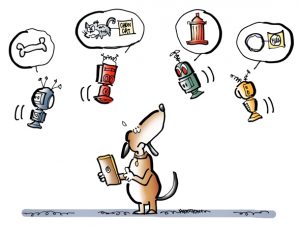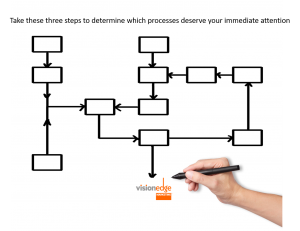Are you interested in taking your eCommerce marketing strategy to the next level? Most business owners and marketers are, especially with the new year right around the corner. This is when we reassess our various strategies and learn how we can improve.
The thing is, digital marketing can be complex, and your processes may vary depending on your industry, budget, and resources. You have to keep these factors in mind when you’re trying to decide how you’ll increase sales, subscriptions, and engagement in the coming months.
My goal today is to share universal tips that I believe will benefit business leaders and marketers just like you, regardless of what you sell or how you’ve promoted your brand up until this point.
With that in mind, let’s look at several ways you can enhance your eCommerce marketing strategy and secure more online sales.
Diversify Your Subscription Options
The first thing you should do is make it easy for visitors to connect with your brand. When visitors have multiple options to subscribe to your business, there’s a good chance you’ll see more engagement and conversions.
You’ll want to create a simple email registration form so visitors can join your email list and receive content and offers from your business. This will make it easy for website visitors to sign up to receive content and promotions from your company. Email is the obvious solution here, but far from your only option.
I also recommend giving people who visit your online store an option to follow you on social media. You can include buttons that allow visitors to click-through and land on your profile. Alternatively, you could add a social wall to your site that displays all of your activity across the most popular social networks.
Push alerts are another effective subscription option, especially if most of your audience accesses your site from a smartphone or tablet. Research shows that an impressive 15.95% of shoppers will choose to receive push notifications from your business if there’s a 1-step opt-in form.
As you can see, there are plenty of ways to build your subscriber count. I suggest experimenting with all three of these strategies and measuring your results over time.
Make Personalization a Marketing Cornerstone
Personalization is a powerful way to improve your marketing. Many shoppers choose to shop with brands that understand their unique goals and pain points and reflect this information in their marketing.
One of the best places to observe the power of personalization is on the biggest eCommerce site in the world, Amazon. If you check your Amazon account, you’ll see a long list of products that match your past orders and search history. These suggestions often lead to shoppers spending more and having an overall better user experience.
You’ll want to spend time reaching out to your customers so you can learn about their specific goals and interests. It’s possible to obtain a wealth of information from shoppers by sending out feedback forms through email and using on-site behavior to personalize future offers and content.
If you plan on using personalization in your email campaigns (and you should!), you will likely see a significant boost in sales and user engagement. Studies show that, on average, personalized email subject lines are 26% more likely to be opened.
You can take it a step further and create custom pop-up campaigns and offers shown to visitors based on how they engage with your site. For instance, if a visitor is looking at a product available on your storefront but tries to leave, you could present a discount if they use the provided coupon. Small exchanges like this can have a tremendous impact on profits and customer loyalty.
Show Visitors Sales Notifications
Another excellent way to amplify your marketing strategy is to show live sales notifications. If you’ve never heard of these types of alerts, let’s break it down. Live sales notifications are essentially non-intrusive pop-ups that show visitors when other customers take action on your site.
The actions you choose to display can vary based on your goals. For example, if you hope to grow your email list, you could alert your visitors when someone subscribes. Similarly, you can trigger an alert when a shopper buys a specific product or service from your site.
If you’re wondering about their effectiveness, consider this; sales notifications are proven to increase sales by an average of 15%! The reason for this sharp rise in sales boils down to two words. Social proof.
Social proof is the idea that shoppers are more willing to take a specific action if they see other people doing the same thing. So, if a visitor is on the fence about buying something from your store but sees that three people bought the same thing just while they were on your site, this could encourage them to go through with their order.
Boost Sales by Inspiring FOMO
Fear of missing out, also known as FOMO, can result in more sales and brand engagement. FOMO is the idea that people will make purchases instinctively if they are afraid that the deal or product may not be around forever.
An impressive 60% of shoppers say they’ve experienced FOMO and then bought the product they were looking at within 24 hours. This should tell you everything you know about how FOMO marketing can help your business.
Now, let’s go over a few ways you can spark FOMO. The obvious example that comes to mind is the recent Black Friday and Cyber Monday deals. Shoppers around the globe hurriedly took advantage of countless offers because they knew that the sales would only be around for a few days.
You don’t have to wait until the holidays next year to put this strategy into practice. One way to inspire FOMO all year long is to host flash sales every few months. Let visitors know when the deals go live and include a countdown timer so they can see exactly how long they have to take action.
It’s also possible to get people to make purchases from FOMO by including things like a “low stock” or “seasonal” button next to appropriate products on your storefront. When users see they only have a short window to place their order, many will follow through with their purchase.
Use Retargeting to Reach Lost Customers
The last tip we want to talk about today is how and why you should reach out to visitors that leave without placing an order. It’s estimated that around 67% of shoppers that put items in their cart leave without placing their order.
Instead of letting these people walk out the metaphorical door, you can use retargeting to bring them back to your site to complete their purchase. We’ve had tremendous success with retargeting campaigns through email and social media.
If your goal is to connect with email subscribers that leave before finalizing their order, I recommend creating a cart abandonment email series. On average, sending three abandoned cart reminders leads to a whopping 69% more orders. We send one email out an hour after a user leaves, then again in 24 hours, and finally, we try one more time a week later if they still haven’t returned.
The key to making your retargeting strategy work is to make coming back worth it to your customers. We accomplish this task by including a discount that entices visitors to return to our site and get the items they added to their cart for a lower price.
You can also take to social media and create dynamic ads for people who’ve visited your site but haven’t placed an order. You’ll want to use a similar strategy to reward people for leaving social media to circle back to your online store to place their orders.
Back to You
There you have it! These eCommerce tips will help you improve your marketing strategy and hopefully secure more sales. I want to mention that you should always look at how visitors are engaging with your site and promotions. Check your Google Analytics account and sales reports, and you’re bound to find more clever ways to skyrocket sales in the year ahead.
Digital & Social Articles on Business 2 Community(34)





